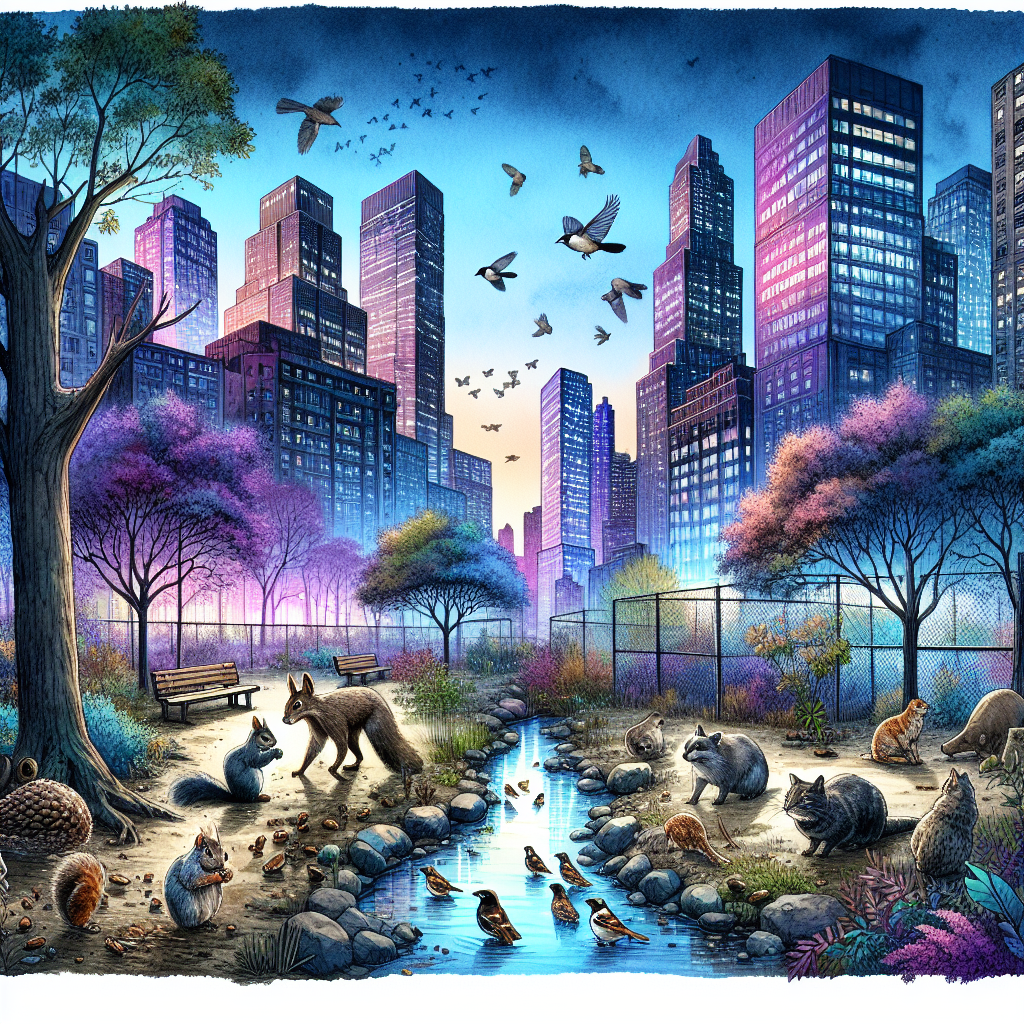With the right perspective, the urban sphere can be appreciated as an unexpected oasis for many wildlife species that have adapted to city life.
Today, urban wildlife isn’t just comprised of the ubiquitous pigeons, squirrels, and raccoons, but it also includes more surprising inhabitants like coyotes, foxes, and even deer.
These animals have adapted to the urban lifestyle and have learned to coexist with humans, making city parks, gardens, and even rooftops their home.
Urban wildlife plays an essential role in maintaining the ecological balance within cities. They function as vital links in the urban ecological chain by helping control pests and aiding in pollination. Birds and bats, for example, help control mosquito populations, while bees pollinate plants, supporting local biodiversity.
However, living close to nature in an urban setting isn’t without its challenges.
Increased human-wildlife interaction can lead to conflict. While city-dwelling animals have mostly adapted to human presence, it’s crucial for residents to respect their wild neighbours. This includes not feeding wildlife, which can disrupt their natural food-seeking behaviours and create dependency.
It’s also worth noting that urban development often displaces wildlife, leading to loss of habitat. Therefore, creating green spaces in urban areas is vital. City parks, rooftop gardens, and even backyard greenery can serve as mini habitats for urban wildlife. Planting native species in these spaces can attract pollinators and provide food and shelter for a variety of creatures, thus contributing to biodiversity within the city.
Moreover, cities can become stepping stones for wildlife, helping them move and adapt to changing environments.
Urban green spaces can form ‘wildlife corridors’ that link fragmented habitats, allowing animals to navigate through cities and reach larger, more natural areas safely.
Efforts are underway in cities worldwide to enhance urban biodiversity. Initiatives like urban beekeeping, constructing bird-friendly buildings, and developing green roofs and walls are gaining traction. These initiatives not only support wildlife but also enhance the quality of life for city dwellers.
Witnessing urban wildlife can bring a sense of joy and wonder, inspiring a greater appreciation for nature amidst the urban hustle and bustle.
It can also provide opportunities for scientific study and environmental education, giving city dwellers a chance to learn about and contribute to local biodiversity.
So, the next time you’re in the city, take a moment to look around. You may see a hawk circling above, a family of ducks in a city pond, or a busy bee buzzing amongst the city flowers.
These instances remind us that wildlife has its place in the urban sphere and that cities, in their unique way, are very much alive.
In essence, urban wildlife is proof that even in the most unlikely of places, nature will find a way. As city dwellers, it is in our best interest to respect, protect, and coexist with these urban inhabitants that add to the vibrant tapestry of city life.

Leave a Reply